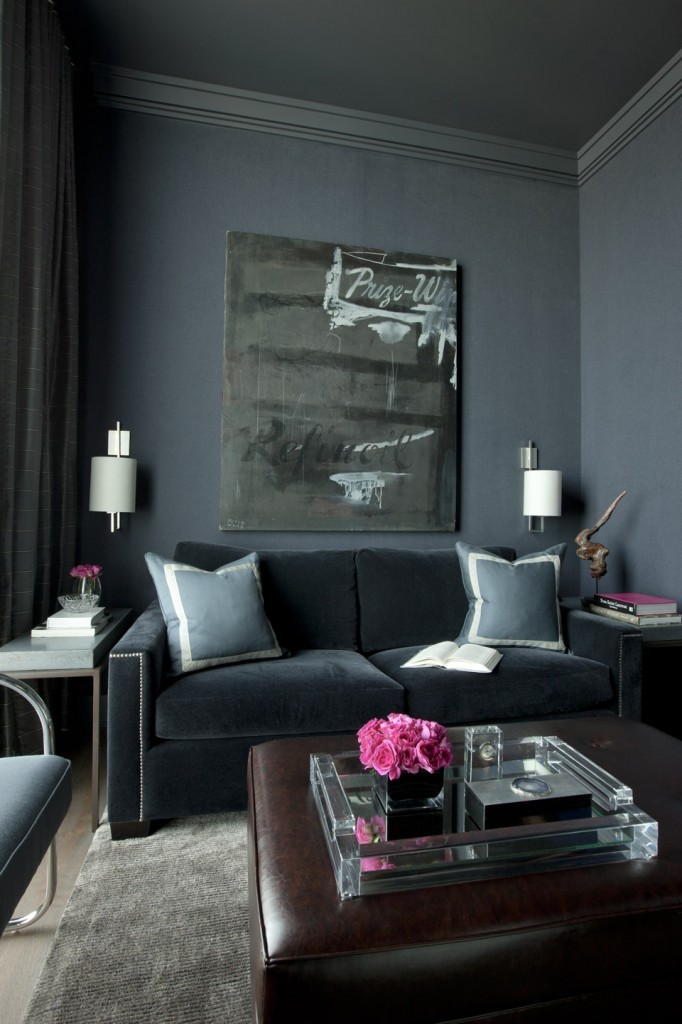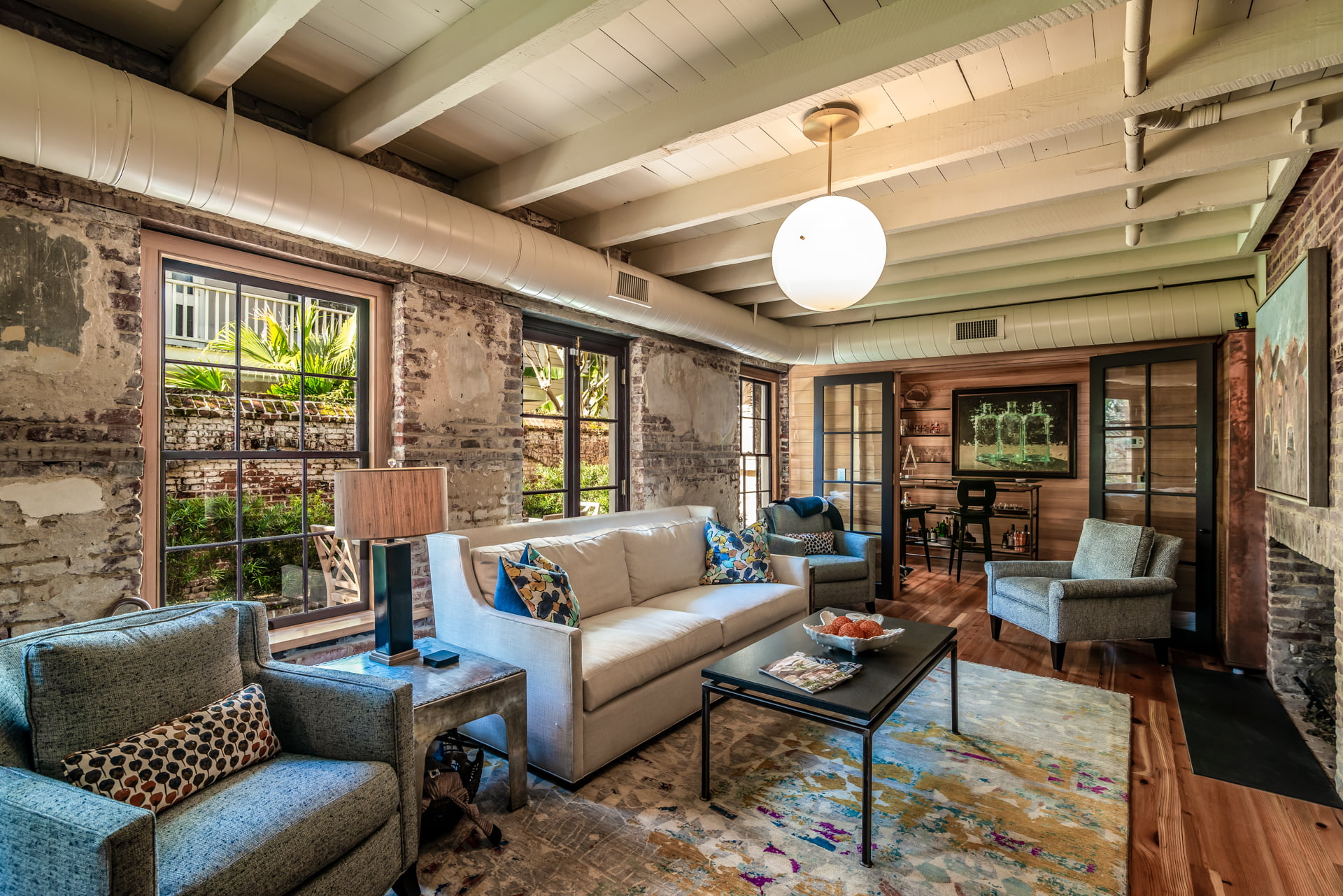Monochromatic (translates as a single color) design uses one dominant color in different shades. Using one color does make a space boring, but quite the contrary in fact. Stunning, dynamic, and complex interiors can be achieved using this very simple design principle. Basically, there are three tricks to pulling off a well-designed monochromatic interior.
Choose a single color palette and vary the shade.

For example, this room uses blue as the dominant color. From the palest blue on the window treatments to the deepest shade on the walls, as well as several shades in between, this bedroom is beautifully relaxing and visually restful. The key here is to incorporate several tones. A dark, medium and light shade should be represented in the design, at the very least.
Texture, texture, texture.
Texture is of great importance in monochromatic design as it adds an additional layer to a very limited palette. The designer for this room used grey as the dominant color and added interest to the space with texture. From the very welcoming faux fur throw to the shiplap wallcovering, this space is anything but drab. Accents with reflective surfaces such as glass and mirrors, as well as leather and other natural fibers, contribute to the layering effect, adding texture and interest.
Add pop of color!

Lastly, adding a pop of a contrasting color in one single area brings the attention to the intentional oneness of the dominant color choice. This can be done with vibrant and brightly colored flowers placed on the coffee table, or something as simple as a bowl of fresh fruit on an island.
Designing the monochromatic way can be beautiful, dynamic and sophisticated. Stick with these three design secrets and you will achieve monochromatic magic. Be bold, choose your favorite color, and go to town!








